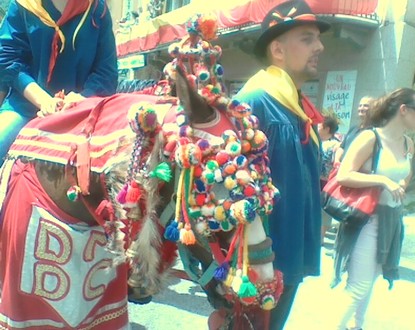This mule trail, in the Middle Ages, was a vital axis between Piedmont and the County of Nice, the only access to the sea for the House of Savoy.
Salt, the white gold of the time, arrived via this route from Provence: Hyères and Camargue. It was unloaded at the port of Nice and from there, on muleback, it went up the valleys of Paillon, Bévéra with a stop at Sospel, then on to Roya and Tende, the last stops for the mules from Nice.
There they would be swapped for those from the town of Lascaris, Tende, known for being sturdier, who would complete the journey towards Piedmont, Cuneo, and Turin. The people of Tende had their own mules; almost every family had at least one beast, if not more.
This activity was the wealth of the people of Tende. However, it remained dangerous with the uncertainties of the road and highway robbers. Thus, the brotherhood of the muleteers of Tende was created to assist families that had suffered an accident or an attack. This brotherhood was, of course, placed under the protection of Saint Eloi.
The date of its foundation is not known, but it can be placed in the 15th century. A document from September 4, 1491, mentions the muleteers of Tende. To give an idea of the importance of this activity, a document from 1777 records more than 46,000 mules leaving Nice.
It is with pride and respect for their ancestors that the people of Tende celebrate their mules every second Sunday of July. On this occasion, the animals wear their finest attire, a mass of thanksgiving is celebrated at the collegiate church, and then they symbolically parade towards the Col de Tende. The richly colorful and vibrant procession stops in front of the town hall, and the new prior receives the brotherhood’s flag from his predecessor.
The Saint Eloi celebration, as every year, gathers a very large audience, and musical groups from the County and Piedmont animate the various events honoring the muleteers and especially the mules, the true heroes of this July weekend.
The mules take on colorful appearances from their attire, their flower collars, and their strides, which become, as if by the magic of the moment, majestic. They are the masters of the place, lords succeeding the Lascaris, whose castle, alone, remains a distorted finger stretched towards the ethereal spaces of a sky of azure.


